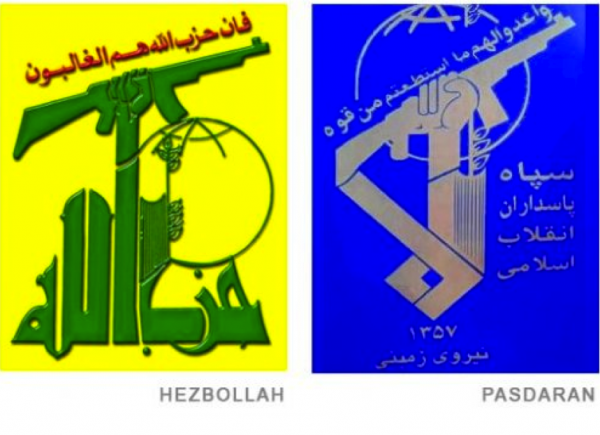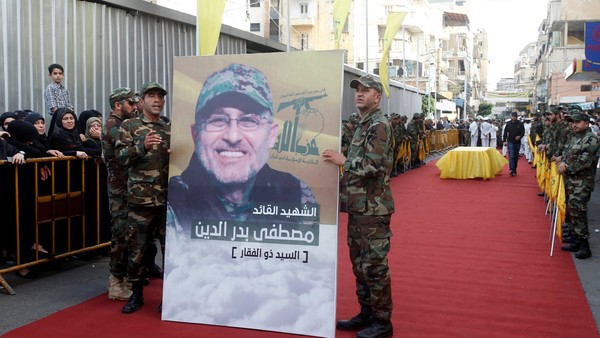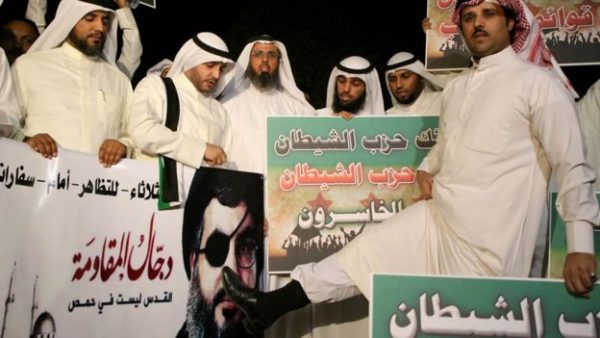
Hezbollah is part of the Qods force which in turn is the foreign arm of Pasadran.
In the wake of the month-long war with Israel in July 2006, Lebanon’s Hezbollah rebuilt itself to become one of the most powerful militant groups in the Middle East.
Over the past 10 years, it has expanded its domestic influence but also become entangled in Syria’s civil war. Here are ways it has changed in some key areas.
Political

Hezbollah transformed from a party with limited power to a potent political heavyweight. It led a series of protests in late 2006 to demand greater decision-making power in cabinet.
In 2008, Hezbollah-led militants initiated clashes in Beirut after the government threatened to shut down its private telecommunications network, eventually acquiring veto power in cabinet.
The party dismissed the legitimacy of an international tribunal investigating the 2005 killing of former Prime Minister Rafik Hariri, which indicted five Hezbollah members.
It remained steadfast in the face of public dissent and a violent domestic backlash, manifested in sectarian clashes and bombings, over its involvement in the Syrian civil war.
For two years, Hezbollah has also used its veto power to prevent the election of a Lebanese president whom it does not favour.
Military

Hezbollah underwent a significant shift, developing new capabilities and growing its ranks through its intervention in Syria, moving away from a purely Lebanon-Israel focus.
Its weapons arsenal grew from from 33,000 rockets and missiles before the 2006 war to an estimated 150,000. Similarly, it swelled from a few thousand members in 2006 to an estimated 20,000-plus.
After 2011, Hezbollah’s military support for the Iran-backed Syrian government – its weapons supply line – gave its fighters considerable combat experience and exposure to Russian military planning. Hezbollah also trained pro-Iranian forces in Yemen and Iraq.
But it lost some of its highest-ranking officials in Syria, and found itself fighting Sunni extremist groups on Lebanese soil.
Financial
Hezbollah incurred financial losses from targeted sanctions and increased military expenditures. Several governments also linked Hezbollah to international drug trafficking rings and money laundering, claims the group has denied.
It receives substantial financial and arms support from Iran.
In 2016, Lebanese banks began to comply with a US law targeting Hezbollah’s finances, closing down hundreds of Hezbollah-linked accounts.
Reports suggest it has struggled to pay compensation to families of fighters killed or injured in Syria.
Arab relations

Tensions between Hezbollah and Arab states soared. Hezbollah was condemned by most Arab governments for its “adventurism” in the July 2006 war. It still enjoyed considerable popular support across the Arab world, however, for fighting a “common enemy” – Israel.
A decade later, the Arab League, the Gulf Cooperation Council (GCC) and the Organisation of Islamic Cooperation (OIC) all branded Hezbollah a “terrorist” organisation.
In the eyes of predominantly Sunni Arab Gulf states, Hezbollah transformed into a Shia force killing Sunnis in Syria. Relations between Saudi Arabia – which also backs an anti-Hezbollah political bloc in Lebanon – and Hezbollah were particularly hard hit.
Media and outreach
Hezbollah maintained its use of media as a political tool. In July 2006, Hezbollah leader Hassan Nasrallah asked viewers of its TV channel Al-Manar to watch as a burning Israeli warship sunk off the shores of Beirut.
The group has since developed an all-encompassing, offensive media strategy in its coverage of regional conflicts, alongside a surge in pro-Hezbollah social media pages.
Its discourse expanded from “resistance” against Israel to include sectarian messaging against Sunni extremism. Its media machine came under attack in 2015-16 when two leading Arab satellites took Al-Manar TV off air.
But Hezbollah also launched a largely successful venture in 2009 when it opened its war museum in south Lebanon, attracting locals and tourists alike.
BBC
Leave a Reply
You must be logged in to post a comment.